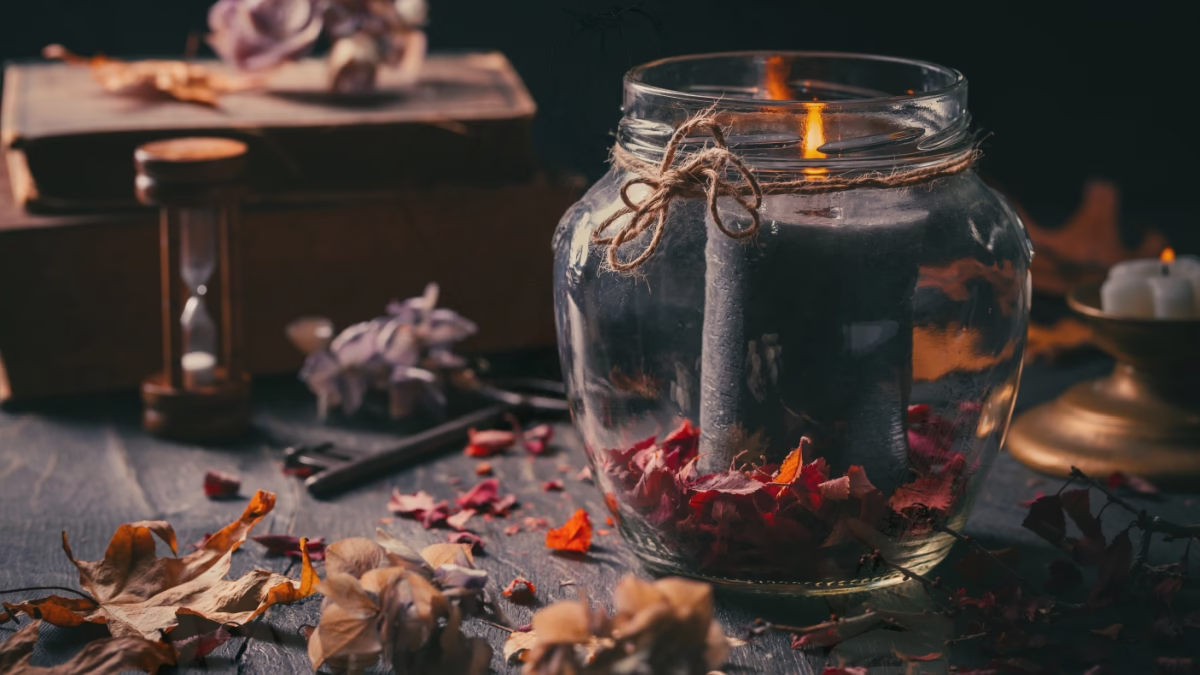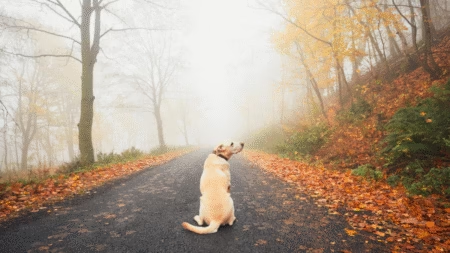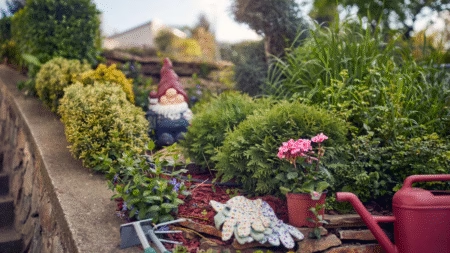
There’s a moment in every horror movie. The camera pans in, the shadows lengthen, the music tightens its grip. And then comes the scream.
Think of Janet Leigh in Psycho, her cry slicing through the shower’s steam before the knife falls. Or Drew Barrymore in Scream, gasping into the phone before the masked killer steps through the glass. These screams have become iconic not because of what happens after, but because of what they announce. The scream tells us: something is ending.
In horror, the scream doesn’t prevent death. It marks its arrival. It names what is already unfolding.
Samhain: The Festival of Endings
At the end of October, the Celtic calendar turned toward Samhain (pronounced SOW-in, rhyming with “cow in”). Samhain marked the shift toward winter, a time when fields were stripped bare, animals were culled, and the sun’s strength waned. It was a time of acknowledgment. Death was in the air, and it was spoken aloud. Families lit fires to guide wandering spirits, recited genealogies to honor the dead, and held vigil as the veil between worlds grew thin.
Samhain, like the cinematic scream, was about the announcement of endings. Not creating them—naming them.
Enter the Banshee
Irish folklore offers a figure who embodies this role: the Banshee—bean sí, “woman of the fairy mound.” She does not kill; she screams. Her cry is the piercing sound that death is near. Some stories place her by rivers, combing her hair with a silver comb. Others cast her as a hooded old woman wailing outside a window. She is many forms, but always a voice.
To mistake her cry for terror is to miss her role. The Banshee is not a monster. She is a witness. She is the one who refuses to let death slip by unmarked.
Why Screams Stay With Us
Why do screams in films linger long after the credits roll? Because they touch the place in us that knows mortality cannot be ignored. In a culture obsessed with youth and productivity, the scream reminds us of limits. We may mute grief in daily life, but the screen amplifies it, letting us feel in the dark what we avoid in the daylight.
That’s why the Banshee still haunts our imagination. She belongs to the same tradition as horror’s scream queen: not inventing death, but refusing to be silent about it.
Recovery as Reckoning with Mortality
Sobriety also begins with a scream. Not always audible, but always visceral. The cry that says: this cannot continue.
In my own recovery, I tried to quiet that cry for years. I told myself I was fine, that I was functioning, that no one saw. But underneath, the banshee in me was keening. Migraines, anxiety, shame-filled mornings—my body was already announcing what my mouth refused to say. It wasn’t until I let myself hear that inner wail that sobriety became possible.
Recovery is, at its heart, a reckoning with mortality. Sometimes literal by acknowledging that drinking could kill us. Sometimes symbolic by accepting that certain versions of ourselves, certain illusions, must die so that something truer can live. Like Samhain, recovery asks us to speak aloud what has ended, and to stand in the space between death and new life without rushing past the grief.
The Collective Cry
But the cry isn’t only personal. We live in an era of collective screams: climate alarms, gun violence, wars, extinctions. These are the banshee wails of our time, announcing endings we’d rather not face. And yet, like in recovery, denial serves no one. To hear the cry is to reckon honestly with where we are. And perhaps, where we must go.
This is where the wisdom of Samhain still matters. The Celts did not romanticize endings, but they didn’t look away either. They lit fires, gathered together, and named their dead. In recovery communities, we do the same: we gather in rooms and on Zoom screens, speaking truths into the air, refusing to let pain remain hidden. In both, the cry is transformed from isolation into witness.
A Practice of Keening
Try this: Sit in a quiet space. Place your hand on your chest. Ask yourself—what in me is ending? What cry have I silenced? Then, without shaping it into words, let out whatever sound arises. A sigh, a moan, a sob. Don’t make it pretty. Don’t control it. Let it announce itself.
This isn’t despair. It is recognition. The scream, like the Banshee, like Samhain itself, is not about giving up. It is about naming what is already true, so that we can step into what is next.
The scream before the silence. The cry before the grave. The keen before the dawn.
Horror movies remind us. Samhain insists on it. The Banshee embodies it. Recovery demands it.
To be alive is to reckon with endings. To heal is to stop running from the cries that announce them. And to step into sobriety, season after season, is to learn that the scream is not the end of the story. It is the doorway through which all new life must pass.

SOBER ENTERTAINMENT: 2025: The Best Year of Horror?

THIRSTY FOR WONDER: at The Sober Curator, led by Anne Marie Cribben—a passionate recovery coach and spiritual companion based in Washington, DC—offers 1:1 coaching, spiritual guidance, and recovery support rooted in compassion and empowerment. As the creator of The Wellspring: A Celtic Recovery Journey, Anne Marie blends the Celtic calendar with sobriety, connecting participants to ancient wisdom and the rhythms of nature.
A fierce advocate for sobriety as liberation and self-love, she challenges the targeted marketing of alcohol to women and champions authentic, joyful living. Her work goes beyond addiction recovery, fostering a life of vibrancy, purpose, and connection.

MOVIE NIGHT WITH THE SOBER CURATOR: is your go-to guide for films and documentaries that intricately weave addiction, recovery, and mental health into powerful storytelling. Think of us as your bee-zy movie critics, curating a hive of must-watch titles that inspire, educate, and spark conversation.
Our review archives are neatly organized into Drama, Dramedy, and Documentary categories, making it easy to find your next captivating watch. Whether you’re in the mood for a heartfelt indie, a laugh-through-the-tears comedy, or a thought-provoking doc, we’ve got you covered.

SOBERSCRIBE NOW!
Resources Are Available
If you or someone you know is experiencing difficulties surrounding alcoholism, addiction, or mental illness, please reach out and ask for help. People everywhere can and want to help; you just have to know where to look. And continue to look until you find what works for you. Click here for a list of regional and national resources.






